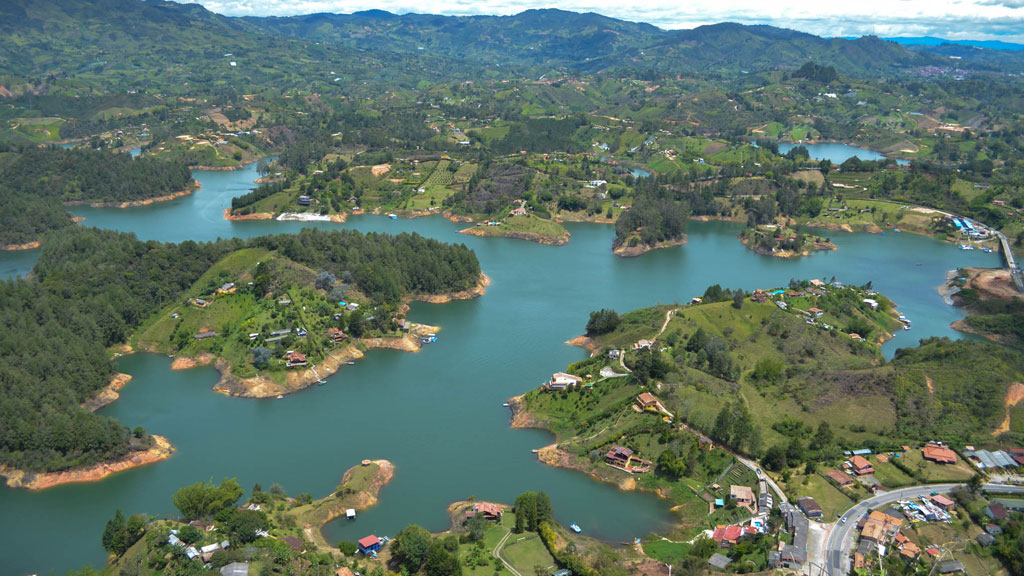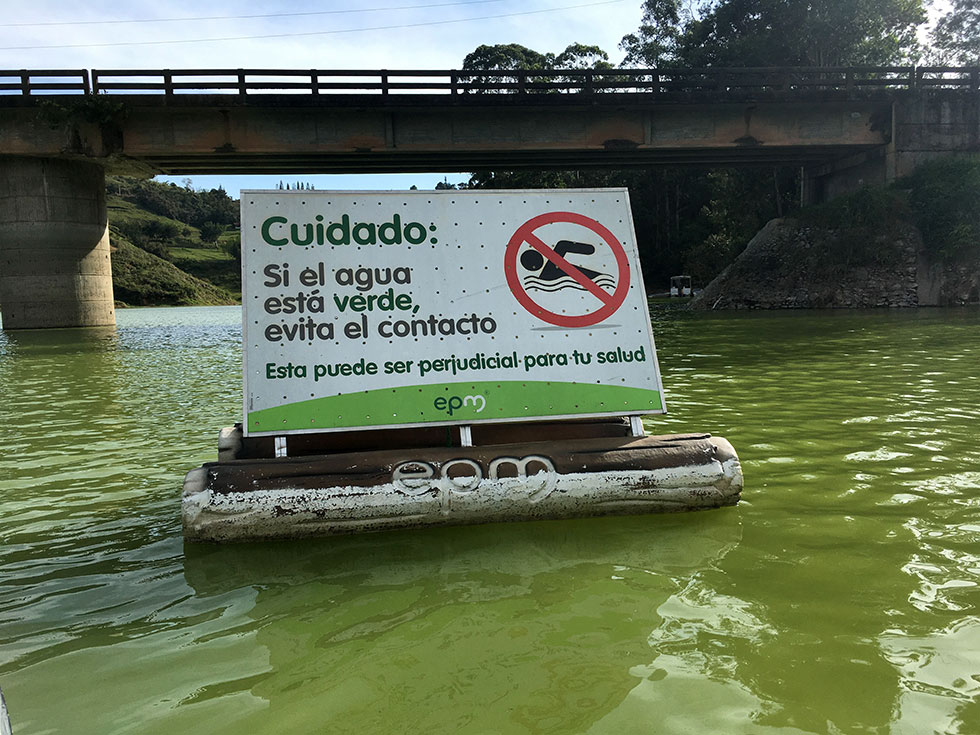Colombia Takes a Big Step Toward Peace as Rebels Lay Down Their Guns
Jun 27, 2017
(MESETAS, Colombia) — Colombia reached a major milestone on its road to peace Tuesday as leftist rebels relinquished some of their last weapons and declared an end to their half-century insurgency.
The historic step was taken as President Juan Manuel Santos traveled to this demobilization camp in Colombia's eastern jungles to join guerrilla leaders as they begin their transition to civilian life.
In a short, symbol-filled ceremony, United Nations observers shut and padlocked the last containers storing some of the 7,132 weapons that members of the Revolutionary Armed Forces of Colombia have turned over the past few weeks at 26 camps across the country. Yellow butterflies were released and an AK-47 converted into an electric guitar rang out plaintive chords in honor of the long conflict's victims.
"By depositing the weapons in the U.N. containers, the Colombians and the entire world know that our peace is real and irreversible," Santos, winner of last year's Nobel Peace Prize, told an audience of former rebel fighters dressed in white shirts with cuffed hands shaped in a heart and a Spanish hashtag reading "Our only weapon are words."
RELATED
Though hundreds of FARC caches filled with larger weapons and explosives are still being cleared out, the U.N. on Monday certified that all individual firearms and weapons, except for a small number needed to safeguard the soon-to-disband camps, have been collected.
"In a world convulsed by old and new forms of violence, by conflicts whose protagonists appear irreconcilable ... a successful process constructing peace in Colombia is also reason for hope and a powerful example for the international community," said Jean Arnault, head of the U.N. peace mission in Colombia.
The day put Colombia one step closer to turning a page on Latin America's longest-running conflict, which caused at least 250,000 deaths, left 60,000 people missing and displaced more than 7 million.
After years of thorny negotiations, the rebels reached an agreement with the government last year to give up their weapons and transition into a political party. But implementing the accord has been slow. The initial deal was narrowly rejected in a national referendum, congress has struggled to pass laws implementing the revised accord, and opposition lawmakers are threatening to overturn key aspects of the agreement if they win the presidential election next year.
Rodrigo Londono, the FARC's top commander, complained about the bureaucratic, legal and political "traps" in a sternly worded speech in which he called on the government to live up to its end of the bargain and not simply rejoice at seeing its former combat enemies disarmed.
He questioned why imprisoned rebels who were amnestied six months ago remain in jail and complained about the state of the Mariana Paez demobilization camp where the ceremony was taking place. It was supposed to contain concrete housing units with running water, kitchens and electricity, but instead has been likened to a refugee camp with rebels living under plastic tarps.
"The state of infrastructure in this rural zone is the best testimony of the slow pace in which the national government is fulfilling what we agreed to," Londono said.
Still, he and other rebels showed no outward sign of regretting their decision to abandon the battlefield.
Stefanía Rodriguez joined the guerrillas a decade ago at age 13. She said she wanted an education that her poor family couldn't provide. Her weapon, nicknamed Tasmania after the Tasmanian Devil cartoon character, was a constant companion to the point she would sleep with it during difficult missions.
"It was like our other half," she said.
Handing it over was like losing part of herself, she said. But with the prospect of peace, she has been reunited with her mother, who she hadn't seen in seven years, and now plans to study engineering.
"It's time to silence the weapons that because of the conflict caused so much damage to Colombia," she said.
Conservative opponents of the peace deal, led by former President Alvaro Uribe, have questioned whether the FARC movement has turned over its entire arsenal. But experts at Notre Dame University's Kroc Institute for International Peace Studies say the one-gun per fighter ratio seen in Colombia could be one of the highest in the world, far greater than the levels of disarmament seen in recent guerrilla conflicts from Guatemala to Nepal.
Aldo Civico, a Colombia expert at Rutgers University, said doubt over the exact number of weapons turned in ultimately doesn't matter in measuring disarmament's success.
"There's always a question mark," he said. "What's more important is we are witnessing step after step the willingness of the FARC to really demobilize and reintegrate and that should be reinforced by the state and government in fulfilling the promises and agreements signed."
Beyond disarmament of the FARC it's still unclear how much more Colombians are willing to work to fulfill the 310-page peace accord's ambitious agenda of land reform, a more open political system and an end to the cultivation of illegal coca crops.
Today a smooth paved road connects Mesetas with Bogota, but the community suffers from the same neglect and inequities that gave rise to the conflict. Like many other places torn by war, residents of the small town voted overwhelmingly for the peace agreement last year though many still harbor doubts as to whether the guerrillas will abandon their involvement in Colombia's flourishing criminal economy.
There's also concern the more-ideological National Liberation Army could fill the void left by the FARC's retreat, although that smaller rebel movement has been negotiating a peace of its own for months.
The rebels are also afraid that they could be targeted. Almost every guerrilla at the Mariana Paez camp recalled the decade-long bloodletting that followed a previous attempt at peace in the 1980s, when as many 3,000 members of a FARC-aligned political party were gunned down by right-wing paramilitary assassins, sometimes in cahoots with state intelligence services.
A more-recent rash of killings of dozens of social leaders highlighted in Londono's speech is also heightening concerns. Some guerrillas, who now wear jeans instead of fatigues, wonder if it is safe for them to leave.
"The tragic experiences of the past cannot be allowed to repeat themselves," said Londono, who is better known by his alias, Timochenko. "Our motherland has learned from her pain and because Colombians will not allow themselves to be cheated again."






